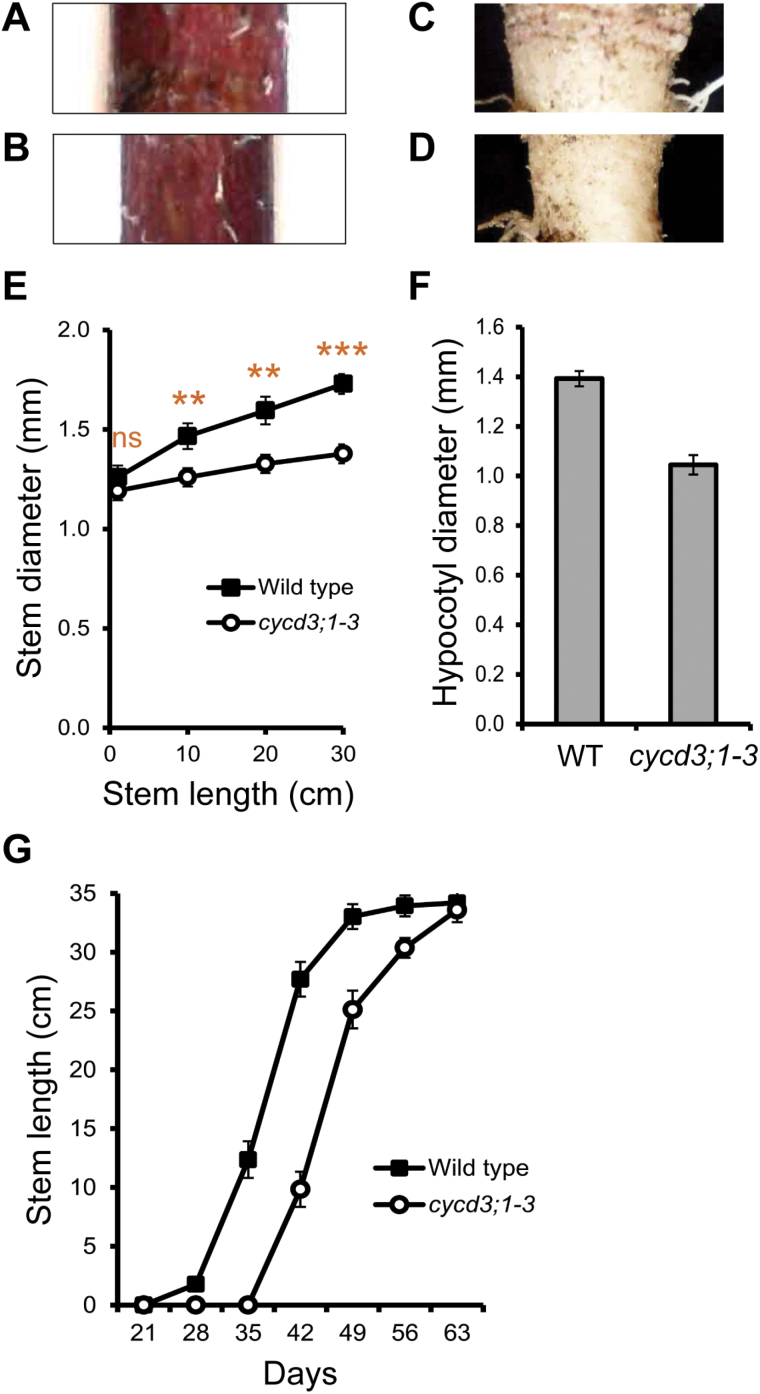Fig. 3.
Loss of CYCD3 causes retarded secondary growth and reduced organ size. (A, B) Representative examples of side views of the base of whole 30-cm-long inflorescences immediately above the rosette in wild-type (A) and cycd3;1–3 (B) plants showing a thin-stemmed phenotype in cycd3;1–3. (C, D) Representative examples of side views of the base of whole mature hypocotyls from 30-cm-tall wild-type (C) and cycd3;1–3 (D) plants showing a thin hypocotyl phenotype in cycd3;1–3. (E) Quantitative analysis of stem diameter at the base of 1, 10, 20, and 30-cm-long inflorescences of wild-type and cycd3;1–3 plants showing the reduced growth in cycd3;1–3. Error bars represent standard error. Significance levels are shown as the difference between wild type and cycd3;1–3 with P <0.01 and P <0.001 (n=10) indicated by double and triple asterisks, respectively (not statistically significant is indicated by ns). (F) Measurement of hypocotyl diameter in 30-cm-tall wild-type and cycd3;1–3 plants showing the reduced growth in cycd3;1–3. Error bars represent standard error. Student’s t test showed that the difference between wild type and cycd3;1–3 was extremely statistically significant (P <0.001; n=10). (G) Quantitative analysis of stem length in wild-type and cycd3;1–3 plants at 21, 28, 35, 42, 49, 56, and 63 d (days relative to date of sowing) showing equivalent rates of stem elongation in wild type and cycd3;1–3. Student’s t test showed that wild type and cycd3;1–3 were not significantly different in stem length at 63 d (n=10). Error bars represent standard error.

